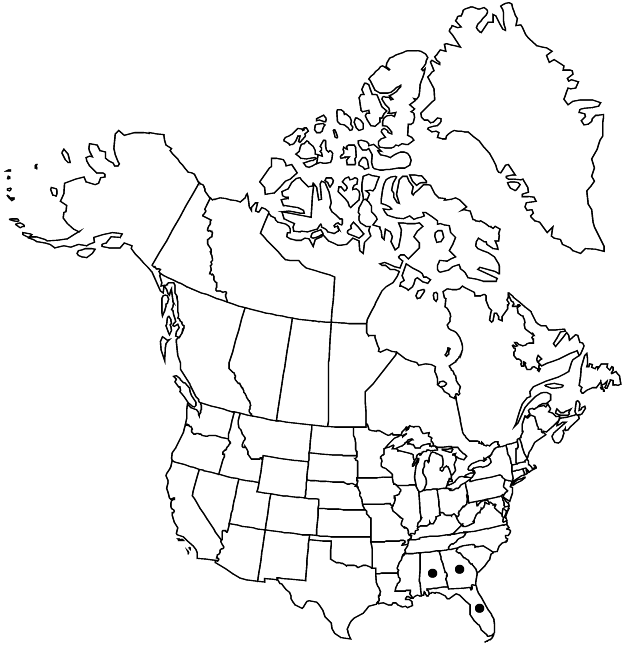Sideroxylon thornei
in Organization for Flora Neotropica, Fl. Neotrop. 52: 170. 1990 ,.
Shrubs or trees, to 6 m. Stems armed, glabrate to villous, glabrescent. Leaves deciduous; petiole 2.5–7 mm, villous (hairs tawny); blade (dull to lustrous adaxially), elliptic to oblanceolate or ovate, 16–76 × 10–54 mm, base cuneate to attenuate, margins plane, apex usually rounded to obtuse, sometimes retuse, abaxial surface villous, especially along midrib (hairs tawny, sometimes reddish brown), venation visible, adaxial surface glabrous or glabrate, midrib flat, marginal vein absent. Inflorescences 3–8-flowered. Pedicels 4.5–8 mm, glabrous or glabrate. Flowers: calyx 2.1–2.7 mm diam.; sepals 5, 1.4–1.8 × 1.3–1.5 mm, glabrous or villous; petals 5, white, median segment ovate to obovate, 1.5–1.9 mm, lateral segments lanceolate, 1.5–1.8 mm; stamens 5, 1.1–1.3 mm; staminodes deltate to ovate, 1.9–2.5 mm, erose; anthers sagittate, 0.7–1.5 mm; pistil 5-carpellate; ovary 5-locular, 1–1.4 mm, hairy; style 0.8–1 mm. Berries purplish black, subglobose, 8–11 mm, glabrous or glabrate. Seeds 6.5–8 mm.
Phenology: Flowering Jun–Jul.
Habitat: Low flatwoods, stream margins, floodplains, hammocks, and wetlands, often bordering cypress ponds and swamps
Elevation: 10-80 m
Distribution

Ala., Fla., Ga.
Discussion
Of conservation concern.
A. Cronquist (1949) hypothesized that Sideroxylon thornei is a hybrid between S. lanuginosum and S. reclinatum, a view repeated by T. D. Pennington (1990). The distinctive stomatal rims and cuticular patterns of S. thornei indicated to L. C. Anderson (1996) that the species is not of hybrid origin. Collections obtained since its description demonstrated greater variation in leaf size and shape, and a larger number of populations in the area where Alabama, Florida, and Georgia converge.
Selected References
None.